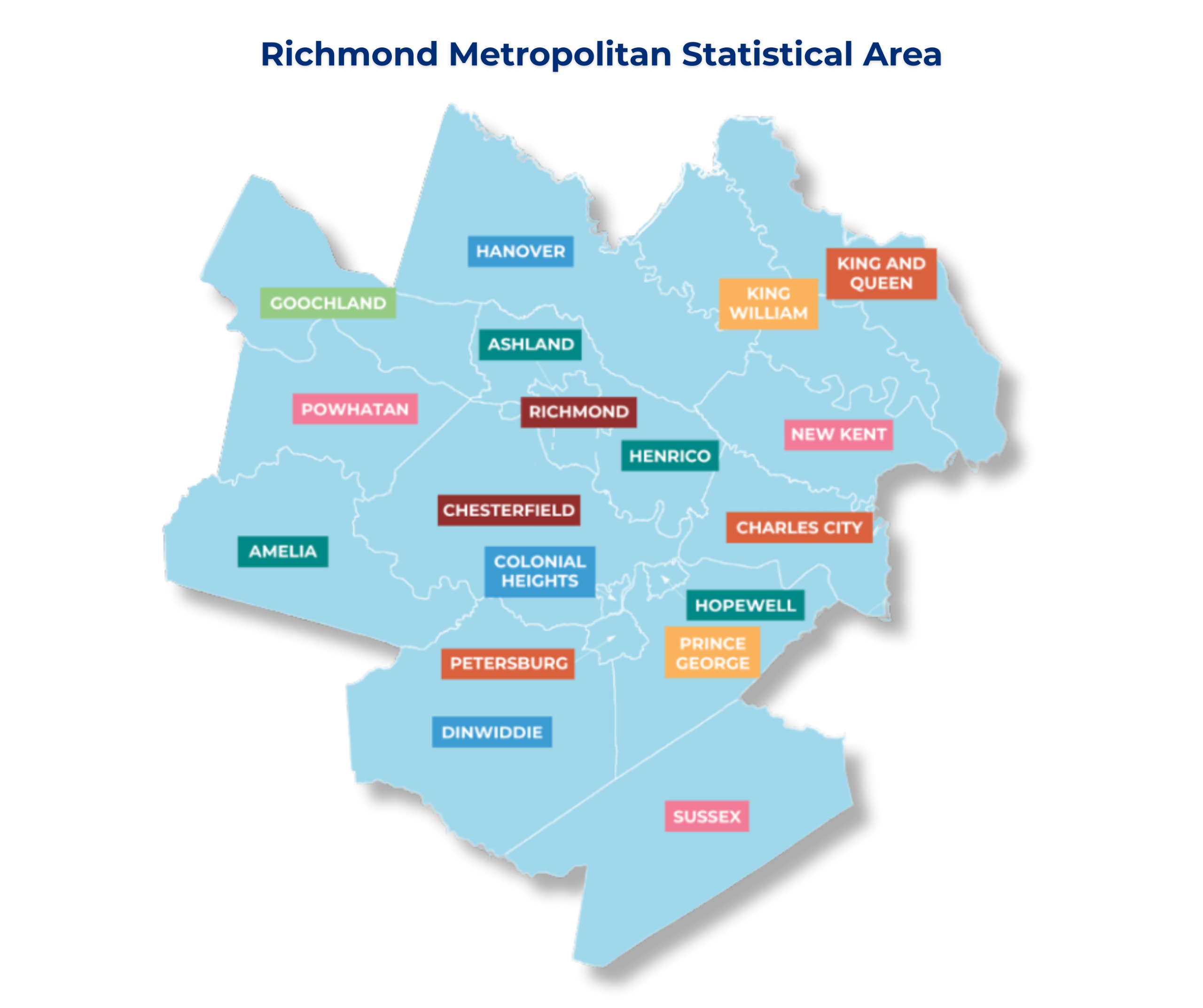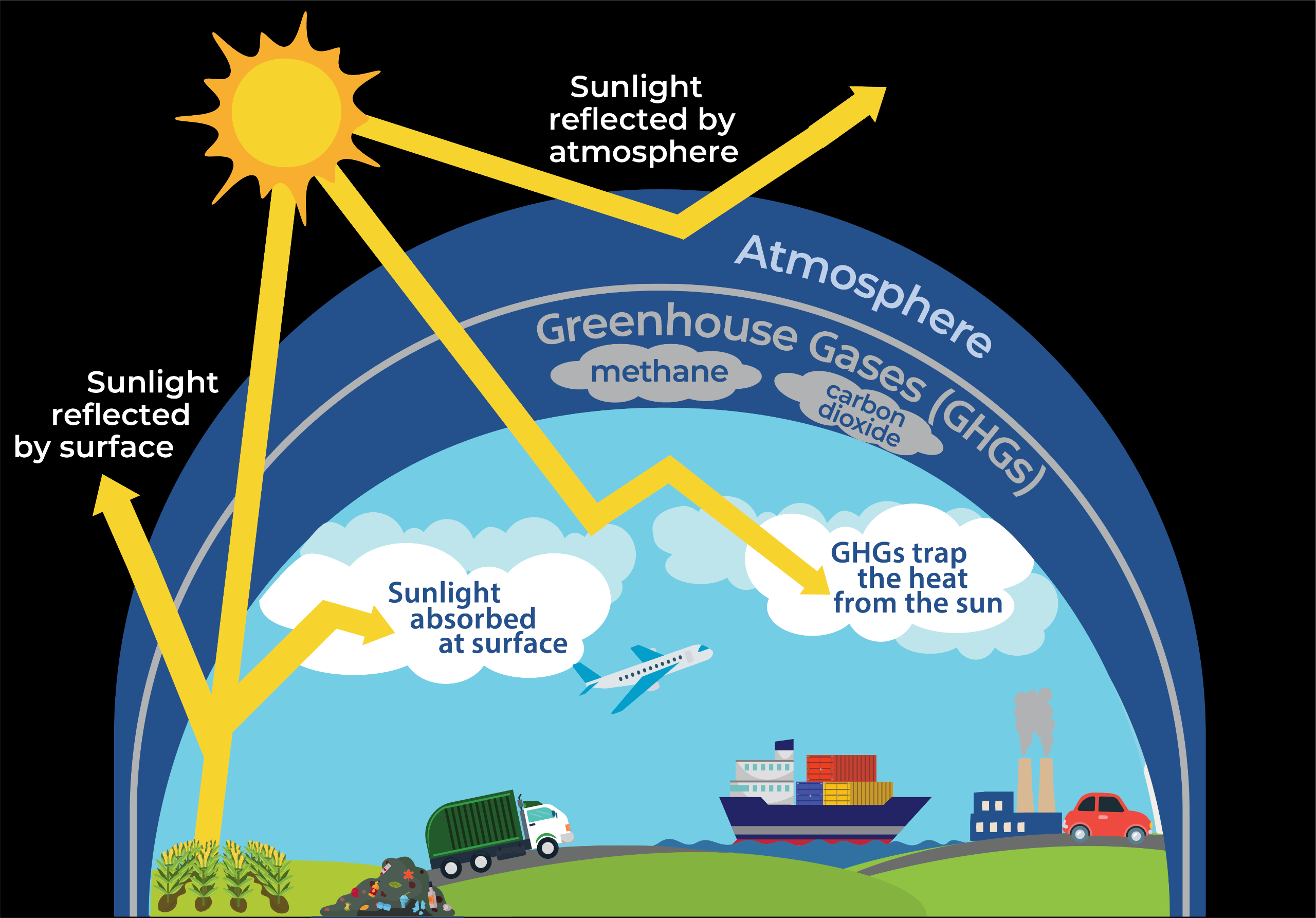Public comment was open October 13-27, 2025
The Pathways to the Future: Air Quality Plan is the first regional approach to climate action planning in central Virginia. This plan reflects two years of collaboration between localities in the Richmond metropolitan statistical area (MSA), with significant input from private stakeholders, nonprofit and community-based organizations, and the public.
It charts a path towards a clean energy economy - envisioning a future with better air quality, better health outcomes, and a strong and diverse economy. This vision will be co-created; each community can identify the pieces of the puzzle they will contribute, and we will work together towards the shared goals set forth in this plan.
Not every GHG reduction strategy will apply equally to every community and the responsibility for achieving emissions reductions does not rest solely with local governments. While many partners have a role to play, local governments are uniquely positioned to lead by example and set the tone for broader community action. Together, these actions represent shared opportunities for residents, businesses, institutions, and agencies to contribute to a more sustainable, resilient, and low-carbon future.
Note: This is a DRAFT plan and will undergo changes including the addition of appendixes and other elements and replacing placeholder images. Nothing within this draft plan should be considered final.
Explore each sector
-
Energy
Industry
Natural and Working Lands
Transportation
Waste
-
Open the Full Plan PDF
Download
Who is the plan for?
The goal of the Pathways to the Future: Air Quality Plan is to guide localities, Indigenous nations, agencies, industry, and communities to work together to reduce emissions, improve local air quality, support clean energy workforce development, and ensure a just and equitable energy transition in vulnerable communities. This plan reflects significant input from the community.
This plan covers the full Richmond Metropolitan Statistical Area (MSA), covering 13 counties and 5 independent cities and towns. It also belongs to the 5 sovereign Indigenous nations of the region: The Chickahominy Indian Tribe, the Chickahominy Indian Tribe-Eastern Division, the Pamunkey Indian Tribe, the Rappahannock Indian Tribe, and the Upper Mattaponi Indian Tribe.

What are greenhouse gases (GHGs)?
Invisible gases are released into the air through industrial and natural processes and when burning fossil fuels, such as from driving cars, heating buildings, producing electricity, and farming. These gases trap heat in the atmosphere, causing climate change and an increase in the average global temperature. There are six main GHGs:
- Carbon dioxide (CO₂) – from burning fossil fuels like coal, oil, and gas
- Methane (CH₄) – from landfills, livestock, and natural gas systems
- Nitrous oxide (N₂O) – from fertilizers, farming, and some industrial processes
- Hydrofluorocarbons (HFCs) – used in refrigeration and air conditioning
- Perfluorocarbons (PFCs) – from aluminum production and electronics manufacturing
- Sulfur hexafluoride (SF₆) – used as an insulating gas in electrical equipment

What does “CO2 Equivalent” Mean?
Not all greenhouse gases are equal — some trap much more heat than others. To make it easier to compare and add up the impact of different gases, scientists use something called carbon dioxide equivalent, or CO₂e. CO₂e is a common unit that expresses the warming impact of any greenhouse gas in terms of how much carbon dioxide (CO₂) would cause the same amount of warming over 100 years. This standard way of measuring helps us understand the total impact of all emissions, using one consistent unit — no matter which gas is being emitted.
For example, 1 ton of methane (CH₄) warms the planet 28 times more than 1 ton of CO₂ over 100 years, so 1 ton of methane is equivalent to 28 tons CO2e.
Helpful Terms
Greenhouse Gas (GHG)
The air pollutants carbon dioxide (CO2), hydrofluorocarbons (HFCs), methane (CH4), nitrous oxide (N2O), perfluorocarbons (PFCs), and sulfur hexafluoride (SF6). While some GHGs are naturally occurring, they care considered pollutants when in excessive quantity and when they come from anthropogenic (human-caused) sources.
GHG Inventory
A list of emission sources and sinks and the associated emissions quantified using standard methods.
GHG Reduction Measure
Policies, programs, actions, or projects that reduce GHG emissions or enhance carbon removal. Measures that enhance carbon removal are those that increase the uptake of carbon dioxide from the atmosphere (see Sequestration).
Co-Benefits
Positive effects beyond the stated goal of a GHG reduction measure (e.g., improved public health outcomes, economic benefits, increased climate resilience).
Carbon Dioxide Equivalent (CO2e)
A common unit that expresses the warming impact of any greenhouse gas in terms of how much carbon dioxide (CO₂) would cause the same amount of warming over 100 years.
Carbon Sink
A natural or artificial reservoir that removes and stores carbon dioxide, preventing it from entering the atmosphere as a pollutant. Examples of carbon sinks included soils, oceans, and woody vegetation.
Distributed Energy
Decentralized sources of electricity production, typically from many small producers instead of large, utility-scale power plants. Ex: solar panels on households
Embodied Carbon
Emissions from the entire lifecycle of a product, from raw material extraction to manufacturing, transportation, maintenance, and disposal. Every product has embodied carbon, but efficiency improvements at any lifecycle stage can reduce the amount of emissions associated with the product.
Metric Ton (MT)
1 metric ton = 1,000 kilograms. That’s about 2,205 pounds or 1.1. US tons (also known as short tons).
Micro-Transit
Flexible, on-demand transportation service that uses smaller vehicles to provide shared rides along dynamic routes.
Sequestration
The process by which carbon dioxide is pulled out of the atmosphere and stored (see Carbon Sink). An example of natural sequestration is the uptake of carbon by vegetation and subsequent storage in soils and plant tissues.
Engagement Toolkit
Resources for partners to share the open public comment period.
Contact Us
Have questions or want to learn more about a project, contact us below:
Contact Information Email input@planrva.org Website planrva.org




